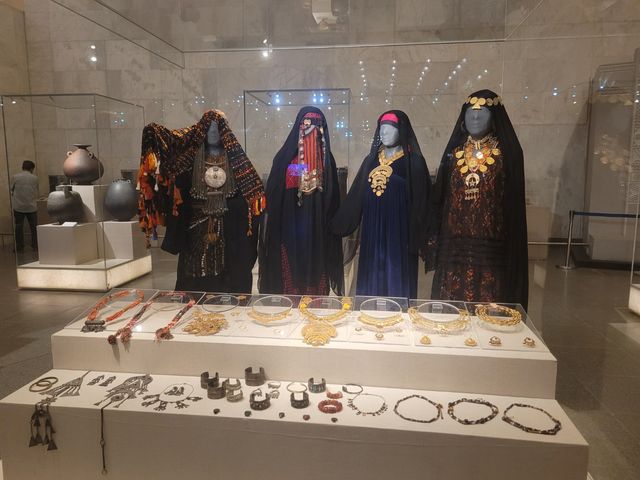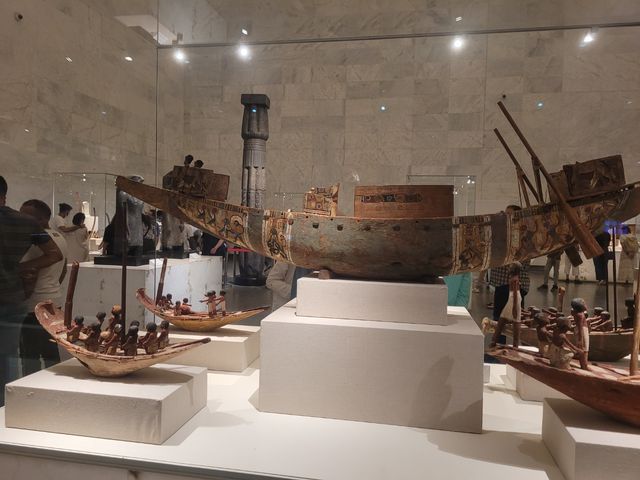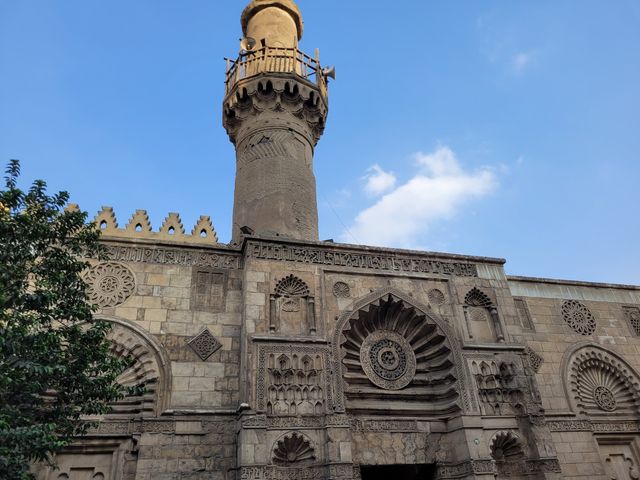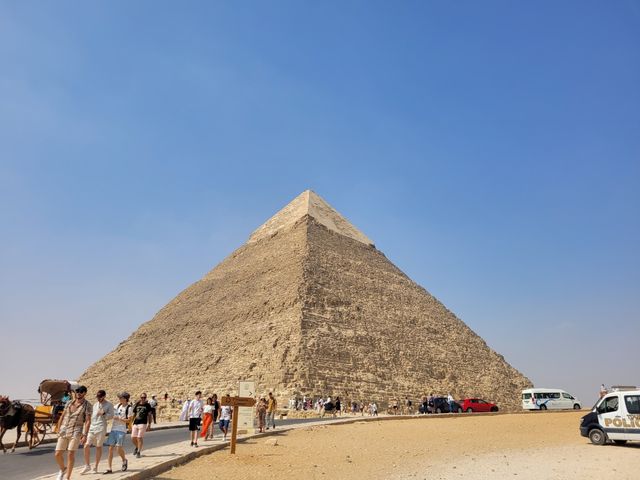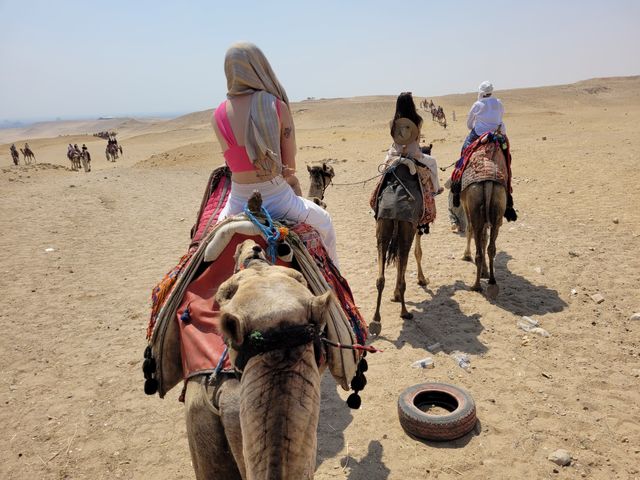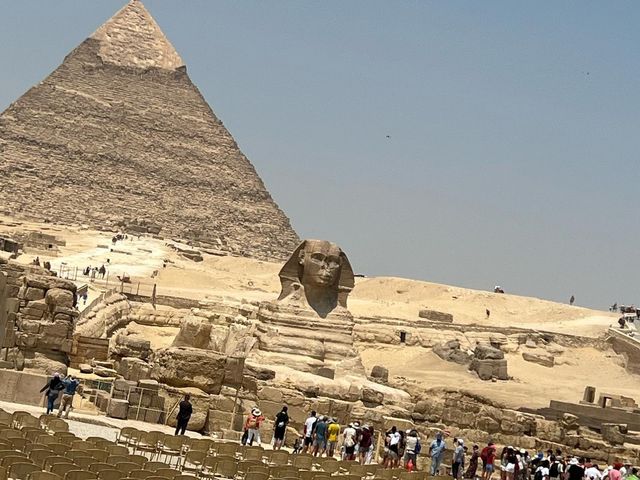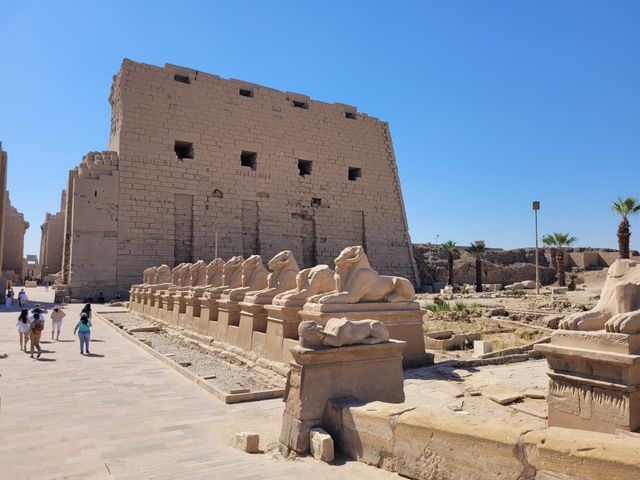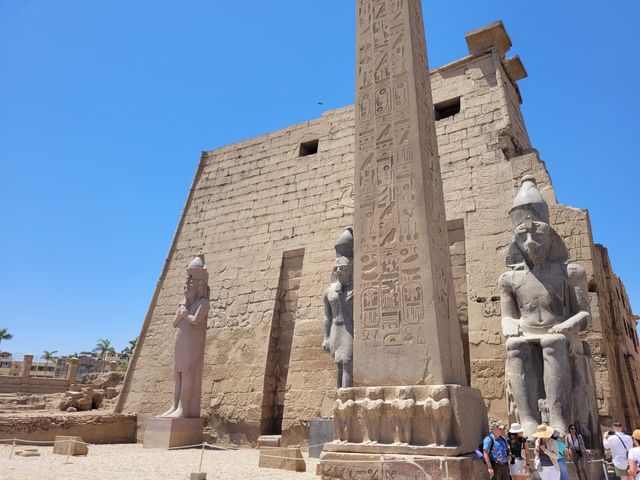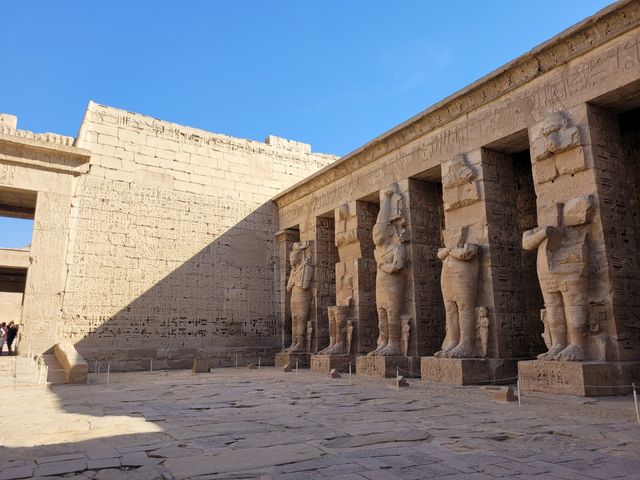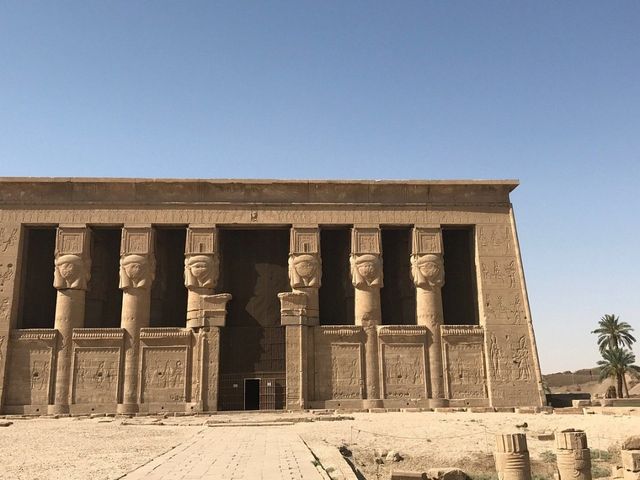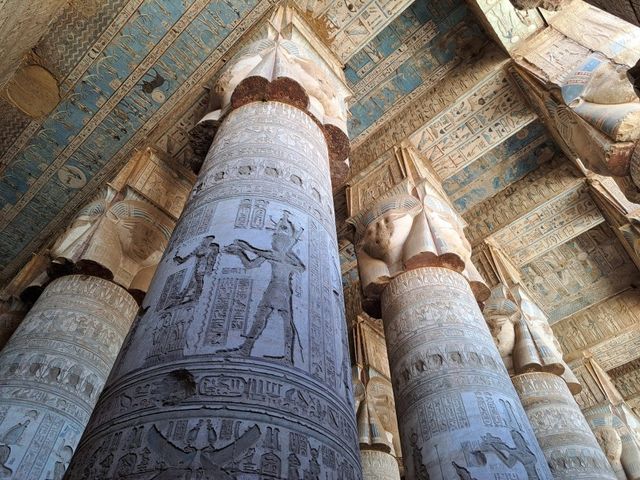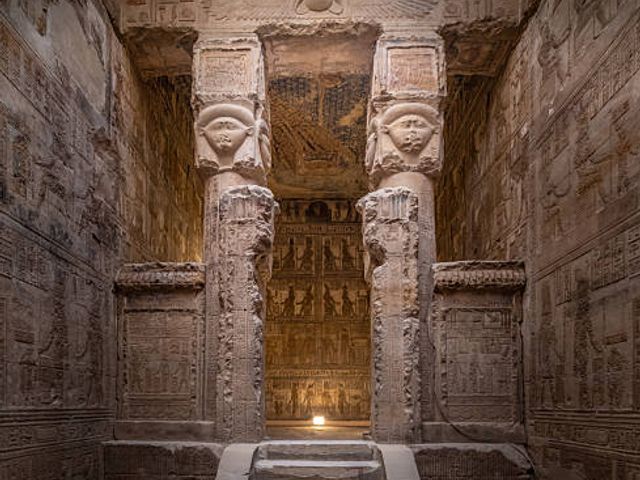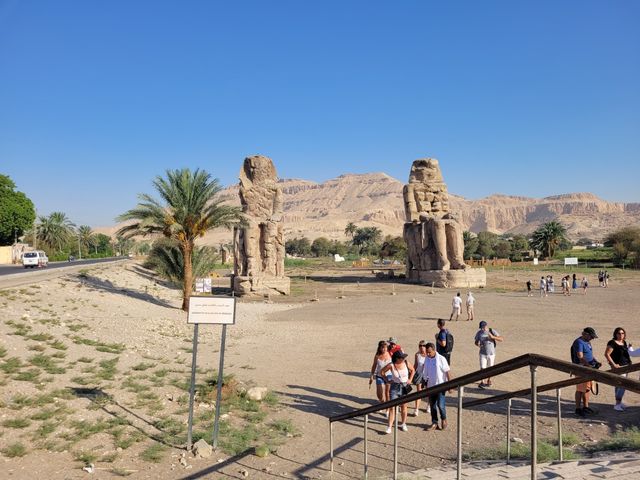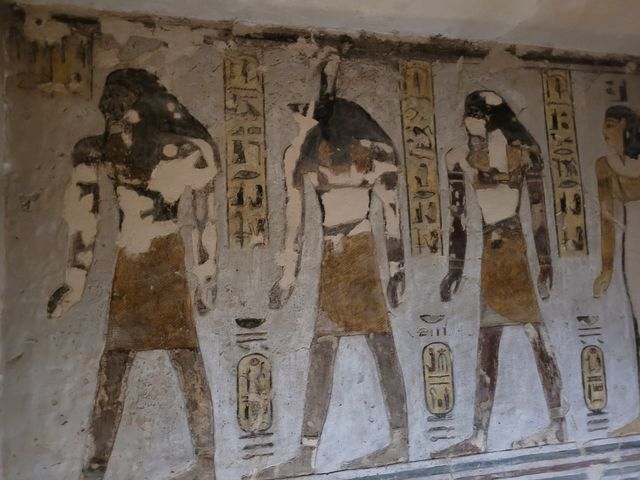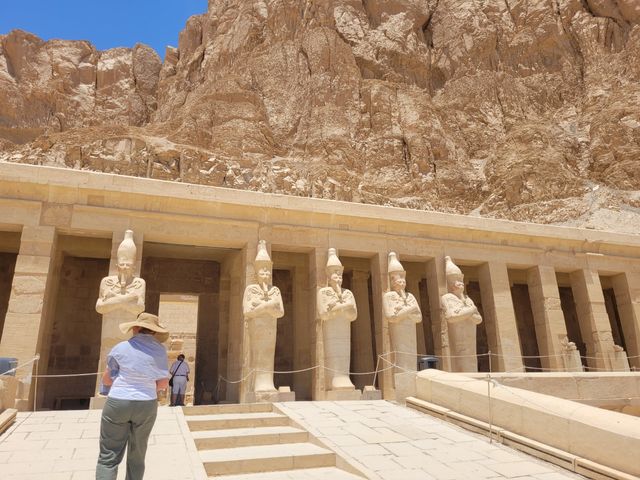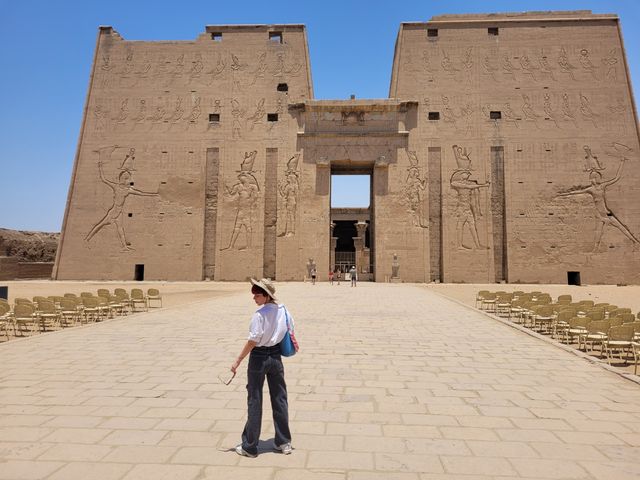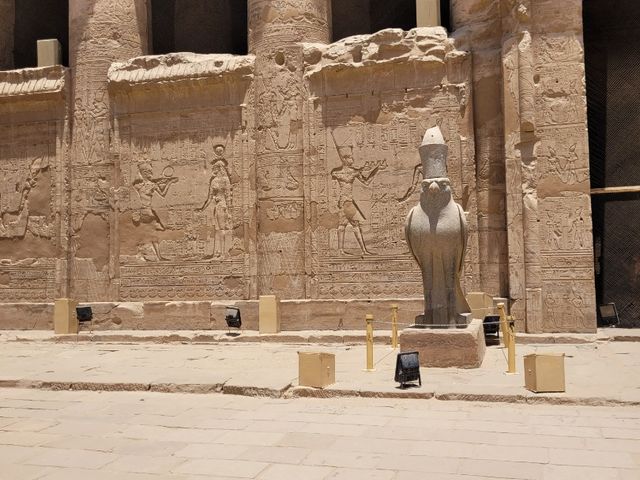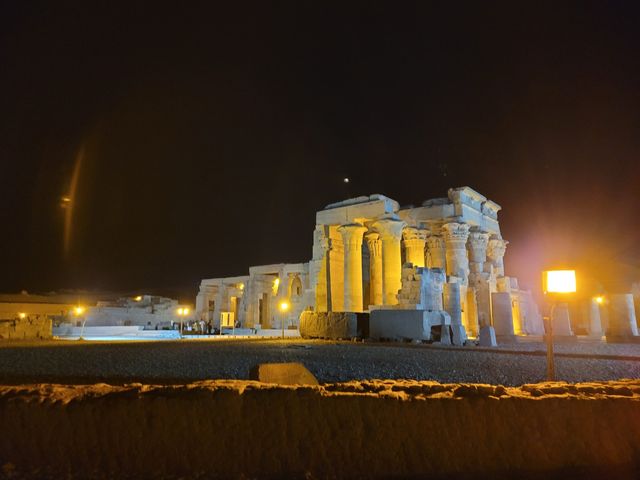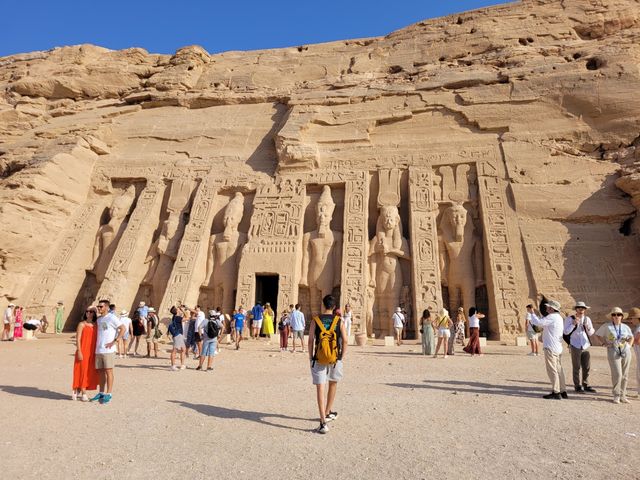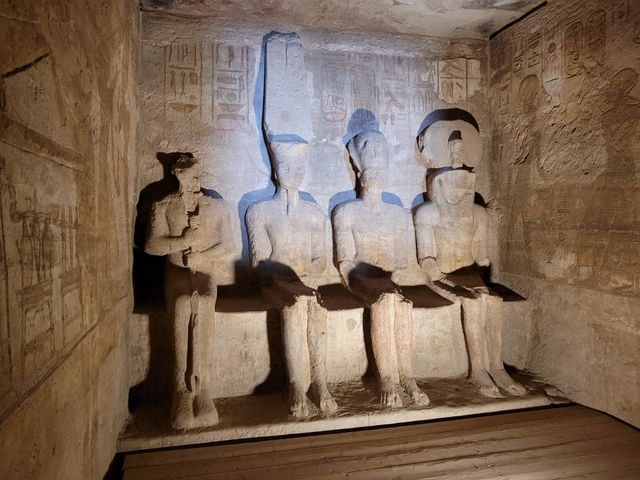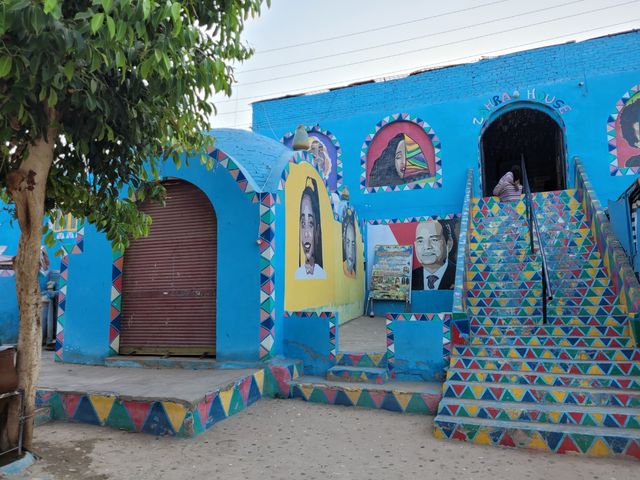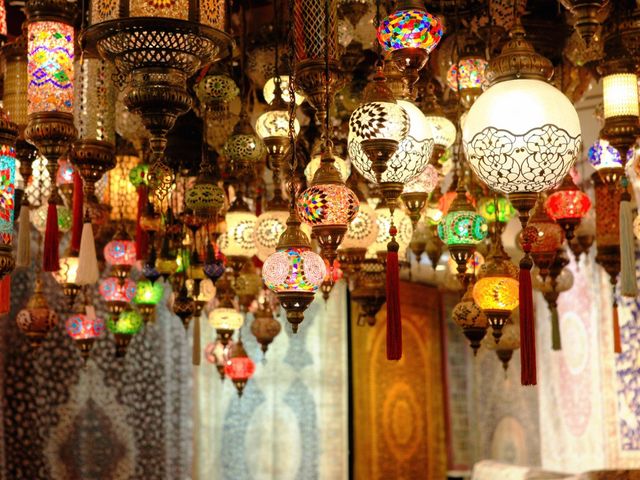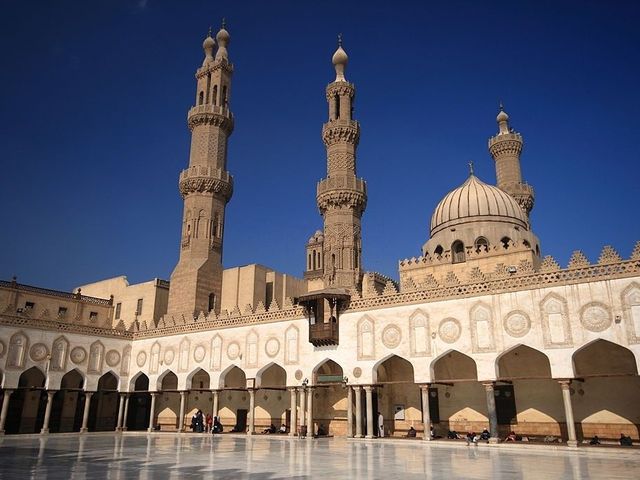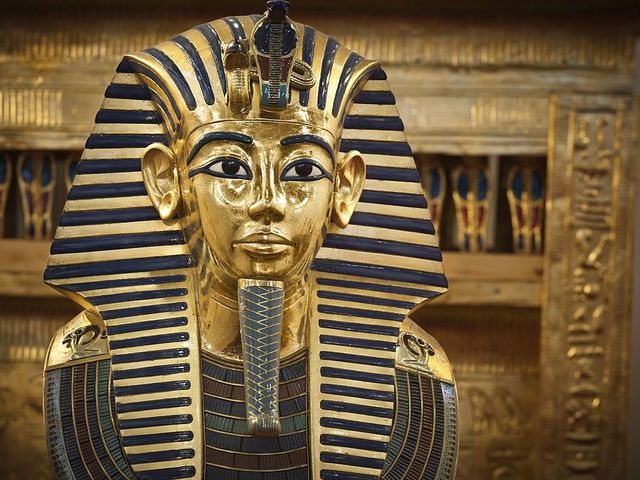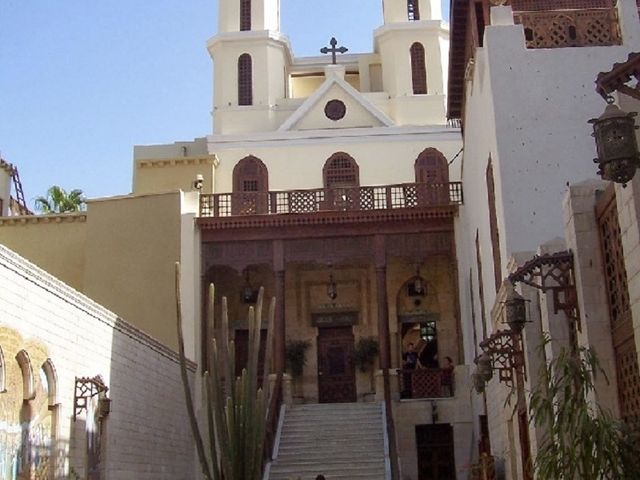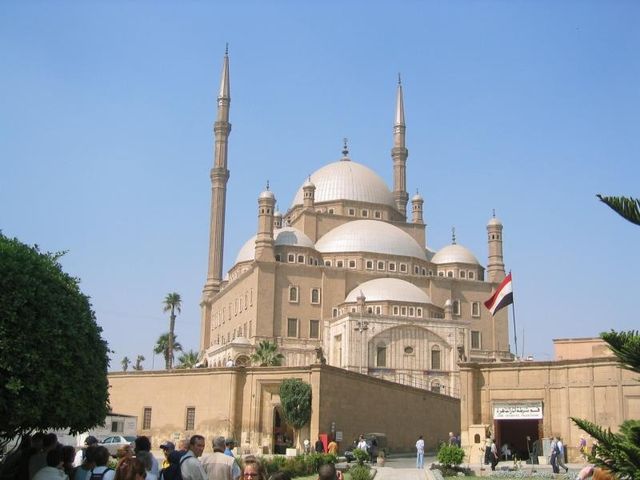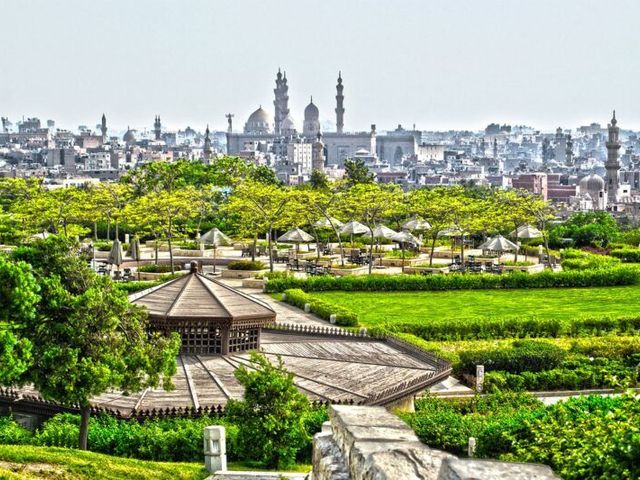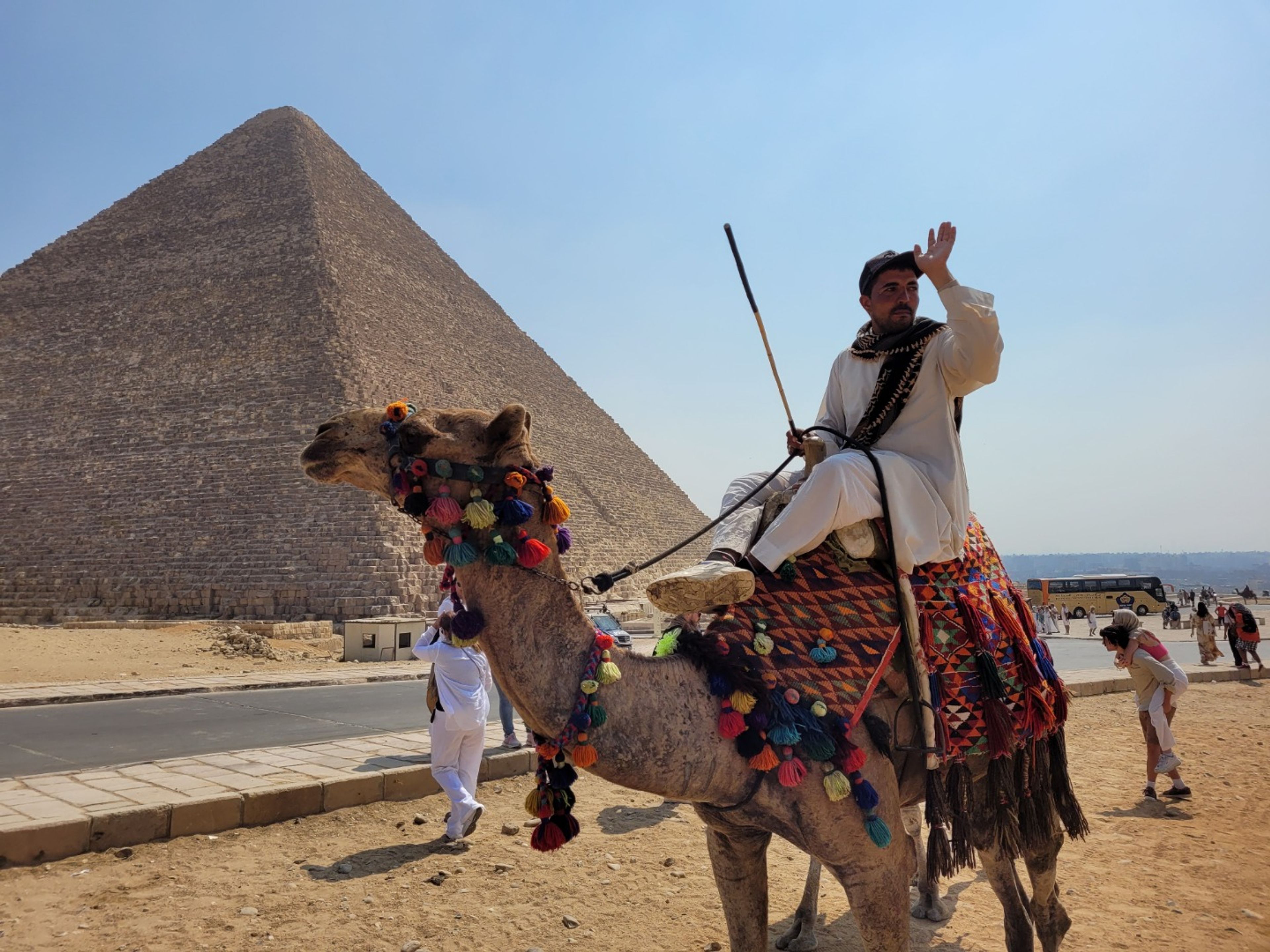
CULTURAL EGYPT Private Tour.
Cultural Egypt! a tour to find and discover the special, iconic and magical places you were looking for.
CULTURAL EGYPT Private Tour.
(CAIRO - LUXOR - ESNA - EDFU - KOM OMBO - ASWAN - CAIRO).
The starting day of the trip depends on the cruise schedule:
- If the cruise starts from Luxor every Monday, the trip will begin every Saturday.
- If the cruise starts from Luxor every Saturday, the trip will begin every Thursday.
Iconic Cities & Impressive Landscapes of Egypt. On this extraordinary journey, you will explore the cradle of civilization, where ancient history and breathtaking scenery blend into one unforgettable experience. Discover the Three Pyramids of Giza and marvel at the Great Sphinx, silent guardian of the plateau. Walk through the Valley Temple of Pharaoh Kefren and continue to the treasures of Luxor, where the monumental Temples of Karnak and the enchanting Temple of Luxor reveal the grandeur of the pharaohs.
Venture into the Valley of the Nobles and the Valley of the Kings, where the tombs of Egypt’s rulers whisper secrets of the afterlife. Admire the delicate artistry of the Valley of the Craftsmen and the impressive remains of Medinat Habu, the funerary temple of Ramses III. The journey takes you further to the Dendera Temple, a jewel dedicated to the goddess Hathor. Stand before the majestic Temple of Queen Hatchepsut, one of the most remarkable women in history, and gaze at the silent Colossi of Memnon. Explore the perfectly preserved Temple of Edfu, dedicated to the falcon god Horus, and the unique double temple of Kom Ombo, honoring both Sobek and Haroeris.
In Aswan, discover the Unfinished Obelisk of Queen Hatchepsut, a masterpiece frozen in time, and admire the engineering marvel of the High Dam. Back in Cairo, immerse yourself in the treasures of the Egyptian Museum of Pharaonic Art, ascend the Saladin Citadel with its stunning alabaster mosque, and let the vibrant colors, scents, and sounds of the famous Khan el Khalili bazaar captivate your senses. This is a journey through iconic cities, sacred temples, and timeless landscapes—an odyssey that brings you closer to the soul of ancient Egypt while embracing the energy of its modern heartbeat.
- The Giza Necropolis is located on the Giza plateau, west of the homonymous town, about twenty kilometers from Cairo, Egypt. Started to used during the second dynasty, pottery dating from Nynecher's reign having been found. In it are the 3 famous PYRAMIDS OF GIZA built by the pharaohs of the fourth dynasty Cheops, Khafre and Menkaure.
- THE GREAT SPHINX OF GIZA is an imposing sculpture with a human head and a lion's body located next to the Pyramids of Giza. It is one of the most extraordinary and iconic monuments not only in Egypt, but in the entire world.
- THE TEMPLE OF THE VALLEY is the name of a construction attached to each pyramid. It acted as an entrance to the funerary complex and was linked to the funerary temple (located next to the pyramid) by a causeway. The best known Valley Temple is that of Khafre, located in his funeral complex in Giza; 500 m from the Pyramid of Khafre, it is close to the Great Sphinx and almost intact, having been covered by sand until the 19th century.
- Built by multiple pharaohs between 2200 and 360 BC, THE TEMPLE OF KARNAK contains within it the great temple of Amun, other minor temples, chapels and the great sacred lake. The most important pharaohs involved in its construction were Hatshepsut, Seti I, Ramses II and Ramses III.
- Located in the city that bears his name and discovered in 1884, THE TEMPLE OF LUXOR is one of the most spectacular temples in Egypt and the most important monument in Luxor.
- THE VALLEY OF THE NOBLES is an area of Egypt located next to the Valley of the Kings and the Valley of the Queens, west of Luxor (ancient Thebes), on the western bank of the River Nile. It contains the tombs of important characters in the environment of the pharaoh.
- THE TEMPLE OF RAMSES III is a New Kingdom structure located in the city of Medinet Habu, west of Luxor, Egypt. In addition to its size and its architectural and artistic importance, the temple is known for its reliefs that illustrate the advent and fall of the Sea Peoples during the reign of Ramses III.
- THE VALLEY OF THE ARTENSANS is the necropolis of Deir el-Medina, where the builders of the tombs of the Valley of the Kings are buried, who lived in a town built especially for them, Deir el-Medina (Set maat , place of Maat or Truth), to keep them apart from the rest of the population and thus preserve the secrets of the royal tombs.
- THE VALLEY OF THE KINGS is the place where most of the pharaohs of the New Kingdom were buried, that is, from that time when ancient Egypt was an empire that extended along the eastern coast of the Mediterranean ( the 18th, 19th and 20th dynasties). It was there that they were buried, for example Thutmose III, Tutankhamun or Ramses II.
- THE TEMPLE OF DANDERA dedicated to Hathor, goddess of love and fertility, is the main building of a group of buildings located within a walled enclosure. It is located about 2.5 km southeast of Dendera, Egypt. It is one of the best preserved Egyptian complexes, especially its main temple, thanks to the fact that it remained buried by sand and mud until it was unearthed by the French Auguste Mariette in the mid-19th century.
- THE TEMPLE OF HATSHEPSUT is located in El Deir El Bahari, on the West Bank of the Nile, opposite the city of Luxor, in the south of the country. It was built on the orders of Queen Hachepsut, daughter of Tuthmosis I, who reigned Egypt for 20 years during the 18th dynasty (1490 - 1469).
- LOS COLOSOS DE MEMON are two gigantic stone statues representing Pharaoh Amenhotep III, who ruled during the 18th Dynasty of Egypt. They are located on the west bank of the Nile, opposite the Egyptian city of Luxor, near Medinet Habu and south of the great Theban necropolis. The two twin statues show Amenhotep III in a seated position; his hands rest on his knees and his gaze is directed east, toward the river Nile and the rising sun.
- THE TEMPLE OF KOM OMBO an unusual double temple built during the reign of the Ptolemaic Dynasty, in the Egyptian city of Kom Ombo. In the period of Roman domination, some extensions were made. The construction is unique due to its double design, which means that there were duplicate entrances, courtyards, halls, chapels and shrines for two gods: Sobek and Haroeris.
- THE TEMPLE OF EDFU was buried under centuries of sand and silt until the 19th century, when the French Egyptologist Auguste Mariette rediscovered the site. The complex is one of the best preserved sites in Egypt today; its architecture is very intact, and the building contains a large number of legible inscriptions on its walls.
- THE EGYPTIAN MUSEUM OF PHARAONIC ART houses the largest collection of objects from the time of Ancient Egypt; owns more than 136,000 objects Classified from different eras of Egyptian history: Tinite, Old Kingdom, Middle Kingdom, New Kingdom, Third Intermediate Period, Late, Hellenistic and Roman, surpassing other museums not only in quantity, but also in the importance of many of them.
- KHAN EL KHALILI OR JAN EL JALILI, is the most famous market in Egypt and the entire Middle East. Its origin dates back to the year 1382, when the Mamluk Sultan Djaharks el-Khalili decided to build a resting place for merchants. The chosen place was the ruins of an ancient Fatimid cemetery.
- THE ASWAN DAM OR ASUAN DAM is a mega construction, designed in 1956 and built between 1959 and 1970 by the Egyptian and Soviet governments, in order to end the floods that occurred in the territory of the under the Nile as a consequence of the sudden increase in the flow of the Nile.
- THE UNFINISHED OBELISK OF THE QUEEN HATSHEPSUT, female pharaoh of Egypt, is found in the granite quarries at Aswan in Egypt "Misr", where the pharaohs removed blocks for the construction of temples, statues, obelisks and pyramids.
HIGHLIGHTS
- Departure from CAIRO
- Private package
- History & cultural tour
- Offered in Spanish and English
- 5 Stars Rating
included
- 3 Nights at the hotel in Cairo on a Bed and Breakfast basis.
- 1 Night at the hotel in Luxor on a Bed and Breakfast basis.
- 4 nights full board cruise on the ship from Luxor to Aswan without drinks.
- All transfers from the hotel or the airport and vice versa in air-conditioned (private) coaches.
- Cultural Egyptologist guide (private) of the best guides in Egypt during all visits included. (with individual bookings, there is a private guide for Cairo tours and another private guide for Luxor and Aswan tours)
- Cairo visits included: The Three Pyramids of Giza, The Great Sphinx, The Temple of the Valley of Pharaoh Kefren, The Egyptian Museum of Pharaonic art, The Saladin Citadel with the alabaster mosque, The famous Khan el Khalili market.
- Cruise visits included: The Temples of Karnak, The Temple of Luxor, Valley of the Kings, The Valley of the Nobles, The Valley of The Artisans, The Temple of Medinat Habu, Colossi of Memnon, Dendera Temple, Edfu Temple, Kom Ombo Temple, Queen Hatchepsut, Aswan High Dam, Unfinished Obelisk.
- 1 Extra meal during visits in Cairo.
VERY IMPORTANT NOTES:
- The hotels and cruise ships indicated in the program will be confirmed in principle. If, in exceptional circumstances, it is necessary to change them, our agency will assign other hotels and cruise ships on the Nile River of a similar or higher category.
- The general itinerary of the program may vary and be modified depending on the itinerary and departure dates of the Nile River cruise.
- The museum included in the Cairo excursions is the Egyptian Museum of Pharaonic Art. Should you wish to substitute this visit with the Grand Egyptian Museum (GEM), a supplement of = USD 40 per person will apply.
- Alternatively, if you would like to visit the GEM as an additional tour (in addition to the Egyptian Museum), the cost will be = USD 65 per person will apply.
- If you wish to upgrade the hotel or cruise category, the rate will be adjusted accordingly.
- The cultural Egyptologist guide service for the program is offered in Spanish. Services in English and other languages (subject to availability) can be provided at an additional cost.
not included
- International flights or domestic flights. (The price of domestic flights will be according to the class of the seat and the day of the issue).
- The entry visa to the country with assistance in Spanish and transfer to the hotel = $ 30 per person.
- General tips for "porters, drivers, restaurants ... ..etc." and also all the tips of the ship's crew + the official rates of the hotels ... etc. $ 50 per person. (This value does not include the tip for the tour guide's service).
- All drinks and Any extras or visits not mentioned in the program.
- Telephone calls, laundry services throughout the trip or any other personal expense not mentioned.
- The guide's tips are set aside at the discretion of the client.
- Excursion to the Temple of Abu Simbel.
- Visit to The Grand Egyptian Museum (GEM).
IMPORTANT NOTES:
- Rates expressed in American Dollars.
- Rates per person according to selected accommodation.
- Services provided in Private.
- Services provided with the accompaniment of a permanent guide.
- Services subject to availability at the time of booking.
- Services reserved and not taken, will not be reimbursed.
- Non-commissionable NET rates.
- Exclusive Rates for International Wholesale Agencies.
- Tax-exempt rates for foreign passengers.
- In case of not having availability in the planned hotels, their services will be confirmed in a hotel of a similar category.
RECOMMENDATIONS:
- Bring a fanny pack for money and documents. There is less risk of theft than anywhere in the world. Egyptians abhor stealing, but there are not only Egyptians.
- Bring a small backpack for excursions, for water, camera, light jacket.
- It is advisable to bring a compass, a hand-cranked flashlight, a notebook and a pen.
- Bring a coat for the night on the boat and some temples that are visited at night.
- Bring loose change, about 10 euros for the first days. In Egypt, vendors and guides can exchange coins for small bills (5 and 10 euros or dollars).
- In hotels there are banks and money can be withdrawn or exchanged. The change is the official one.
- Leave space in the suitcase for your purchases that always come back more loaded. On boats and hotels there is a laundry service.
- Comfortable footwear to walk a lot, better if it is an ankle. Although it is not "adventure tourism" and children or very old people go, we visit places with stones, sand, tunnels, stairs ...
- Clothes: on the boat and hotels they wash clothes, but it is better to bring enough for a single wash in boat or hotel ...
- Check-in time at almost all hotels in Egypt is at 2:00 p.m. and check-out time is at 12:00 p.m. Photography during your Egypt Tours is allowed in most historical sites and museums, but in some museums like the Egyptian Museum and the Valley of the Kings in Luxor there is a fee.
- During your Egypt Holidays Try eating "Fool" Egyptian beans and "Koshary", a traditional Egyptian dish made from different ingredients.
- When visiting mosques it is recommended to wear modest clothing, remove shoes and for women to cover their hair.
- Credit cards are widely used in hotels, restaurants and cafes that are in tourist places. Visa and Master Card are the most used.
- There are several transportation options available in Cairo, the fastest and easiest is to take a taxi. White taxis, which use an odometer, would be a good option if you want to go anywhere near Cairo. It is advisable to avoid taking the black and white taxis, since they do not use the meters and the drivers always ask for an exaggerated rate. There is also the service of ordering an Uber and there is the subway to go from one place to another within Cairo. Although the metro can be quite crowded during rush hours.
- Most of the historical monuments and museums in Egypt open at 9 am until 5 pm. Historic outdoor sites, such as the Pyramids of Giza, are open from 8 am to 5 pm. Some museums have opening hours in the morning from 9 am to 4 pm. During Ramadan, the holy month of the Islamic calendar, keep in mind that these times will change significantly.
DIA 1CAIRO.
CAIRO Modern car or microbusArrival in Cairo. Upon arrival at Cairo International Airport, you will be greeted by our professional local staff, who will assist you with visa formalities and provide full support during the arrival process. From the very first moment, you will feel the warmth of Egyptian hospitality and the comfort of personalized service. After completing the formalities, enjoy a private transfer in a luxury vehicle to your carefully selected hotel in Cairo, where elegance and comfort come together to offer you the perfect rest after your international flight. The remainder of the evening is free for you to relax, adjust to the vibrant atmosphere of the city, and prepare for the incredible journey that lies ahead. Overnight in Cairo at your select hotel.
DIA 2CAIRO.
CAIRO Air conditioned busBreakfast at the hotel. Departure to visit the necropolis of Giza, in it are the famous pyramids built by the pharaohs of the fourth dynasty Cheops, Khafre and Menkaure. Since they were created more than 4000 years ago, the pyramids of Egypt have been the most portentous and emblematic monuments of the Egyptian civilization, as well as the oldest and only wonder that is preserved, and in particular it is worth noting, the three great pyramids of Giza, the tombs of the kings Cheops, Khafre and Menkaure, whose construction dates back, for the vast majority of scholars, to the period called the Old Kingdom of Egypt. It is worth mentioning that the Pyramids are not only the most important monuments in Egypt, but also the oldest in the world.
The great Sphinx and the temple in the valley of the pharaoh Khafre, are funerary constructions that were built under the orders of pharaohs of the fourth dynasty. The Sphinx was the first truly colossal piece of sculpture from ancient Egypt. The Egyptians would not carve statues of these proportions again until the reigns of the New Kingdom pharaohs, some some 1,200 years later. It was carved out of the natural bedrock at the very base of the Quefrén causeway in the shape of a real human head on a lion's body, symbolizing the power and strength controlled by the pharaoh's intelligence. The temple of the valley of Quefrén was built with megalithic blocks covered with red granite and the entrances to the temple were closed with enormous doors of a leaf, probably of cedar wood. The close association of the Sphinx with the Quefrén valley makes it more than likely that the Sphinx were carved for Quefrén. The sphinx is one of the great mysteries of all time and throughout several centuries there have been numerous speculations by archaeologists about its origin, its date of creation or its function.
At the end return to the hotel and night in Cairo.
DIA 3CAIRO - LUXOR.
CAIRO and LUXOR Modern car or microbus and AirplaneBreakfast at the hotel. At the indicated time, transfer to the airport to take the domestic flight to Luxor. Arrival and direct visit to the Temples of Karnak, Built by multiple pharaohs between 2200 and 360 BC, the Temple of Karnak contains within it the great temple of Amun, other minor temples, chapels and the great sacred lake. The most important pharaohs involved in its construction were Hatshepsut, Seti I, Ramses II and Ramses III. Probably the most spectacular thing about the temple is its hypostyle hall; with more than 5,000 square meters it contains 134 columns, of which the 12 central ones are wider and raised the roof, now destroyed, to 23 meters high. At the entrance of the temple, before crossing the first pylon, 40 ram-headed sphinxes will welcome you. It is the beginning of the Avenue of the Sphinxes that reached the Temple of Luxor and the Nile. The temple of Karnak, in Thebes, dedicated to Amun, was the main place of worship in Egypt since the New Kingdom. The photograph corresponds to the great hypostyle hall. Over more than two millennia, the pharaohs embellished the main cult center of Egypt, dedicated to Amun, the great god of the new kingdom. In the 18th and 19th centuries, Karnak amazed researchers even though it was in ruins. More than four thousand years ago, Intef II, king of the 11th dynasty, began work on the temple of Amun-Re in Thebes, where the modern town of Karnak stands. It was the nucleus from which, during the next two thousand years, dozens of pharaohs were creating and remodeling one of the richest and most spectacular places of worship of antiquity, in which archaeologists have cataloged more than two hundred structures.
Visit the Temple of Luxor, called "the harem of Amun" and linked to the temple of Karnak by an avenue of sphinxes and rams. The Temple of Luxor was built between 1400 and 1000 BC. by the pharaohs Amenhotep III and Ramses II, the first built the inner part and the second the outer enclosure, adding the façade, the colossi and the obelisks. The Temple is 260 meters long and is dedicated to Amun (god of the wind). The temple has undergone many evolutions since, what was originally a temple of worship to the The most important god of the Egyptian pantheon, Amun-Ra, was transformed over the years to house the cult of other deities. During the Ptolemaic era, Serapis was worshiped, a syncretic god who combined Egyptian and Greek tradition. Later, during the time of Roman rule, a chapel was installed in honor of Augustus, the emperor who was deified, and later, when the Roman legion turned the temple into a fort, it housed the worship of other Roman divinities. Centuries later, with the arrival of Christianity and the acceptance of this religion by the Empire, churches were built inside the great enclosure of the temple and today remains of one that was located in the courtyard of Ramses II can still be seen. , on which a mosque was later installed dedicated to Abu El-Hagag, a local saint whose relics are kept inside. In short, between the passage of Egyptians, Greeks, Romans, Christians and Muslims, this temple has had cult activity for more than 3,500 years and today it maintains its mosque active, so we can hear the call to prayer while we contemplate the ruins of this pharaonic temple In short, between the passage of Egyptians, Greeks, Romans, Christians and Muslims, this temple has had cult activity for more than 3,500 years and today it maintains its mosque active, so we can hear the call to prayer as we contemplate the ruins of this pharaonic temple.
Transfer to the MERCURE Luxor Karnak hotel to stay on a bed and breakfast basis and in the afternoon departure to visit the West Bank of the Nile in Luxor. There we will visit the Valley of the Nobles and the Temple of Madinat Habu, where the Mortuary Temple of Ramses III is located; It represents one of the most important religious buildings in Thebes. The temple was built in an intentional imitation of the Ramesseum and consists of 2 pylons, 2 courtyards and 3 hypostyle halls, as well as a jetty and a canal that connected it to the Nile, destined to carry out the religious processions by boat of the god , then to the Valley of the Artisans, which is the necropolis of Deir el-Medina, where the builders of the tombs of the Valley of the Kings are buried, who lived in a town built especially for them, Deir el-Medina (Set maat, place of Maat or Truth), to keep them apart from the rest of the population and thus preserve the secrets of the royal tombs.
Return to the hotel and night in Luxor.
DIA 4LUXOR.
LUXOR Modern car or microbus and Cruise BoatBreakfast and departure to visit The wonderful Dendera Temple, which is considered one of the best preserved in Egypt, is located southeast of the city of Dendera, on the west bank of the Nile River, 60 km north of Luxor. The entire complex covers an area of 40,000 square meters and is bounded by an adobe brick wall. The cult temple, dedicated in 380 BC. Hathor, the goddess of love, joy and beauty, was formerly known as the castle of sistrum or the house of Hathor. This impressive temple is considered the largest and most impressive building in this religious complex. However, the complex also includes the temple of the birth of Isis, the sacred lake, the sanatorium, the mammisi of Nectanebo II, a Christian basilica, a Roman mammisi, the monumental gates of Domitian and Trajan, the sanctuary of the boat and a Roman kiosk. There are indications that the complex was originally erected at the hands of Pharaoh Pepi I (around 2250 BC) in the 18th dynasty (around 1500 BC), but the oldest building it houses is the Mammisi of Nectanebo II, the last indigenous pharaoh of Egypt (360-343 BC). The Temple of Hathor, known in past times as the Temple of Tentyra, has undergone various renovations beginning in the Middle Kingdom, although the current structure was built during the reign of Ptolemy XII and Cleopatra VII in the extinct Ptolemaic Empire. In fact, carved on the external face of one of the walls of the temple we find a colossal relief of Cleopatra VII and hers, her son, Caesarion, heir to Julius Caesar. Later some additions were made until the time of the Roman Empire, such as the Roman mammisi or "the house of the birth", attributed to the Roman emperor Trajan but built by Nero. On the other hand, the Christian basilica was erected during the 5th century AD. C. and represents an excellent architectural example of the first Coptic churches. Likewise, since Hathor was also the goddess of healing, the city of Dendera has always been associated with the healing of travelers and pilgrims, who sought a remedy for their illnesses and the blessing of the gods.
Then transfer to the Ship, to stay on a full board basis. Night in Luxor.
DIA 5LUXOR - ESNA - EDFU.
LUXOR, ESNA, and EDFU Cruise BoatBreakfast on the boat. Departure to visit the Valley of the Kings (including 3 royal tombs). This is the place where most of the pharaohs of the New Kingdom were buried, that is, from that time when ancient Egypt was an empire that stretched along the eastern coast of the Mediterranean (the 18th, 19th and 20th dynasties). It was there that they were buried, for example Thutmose III, Tutankhamun or Ramses II. In the beginning, during the Old Kingdom and the Middle Kingdom, Egyptian kings were buried in pyramids built in the northern part of the country, near Memphis, which was the capital. After the last pyramids were built, Egypt went into crisis and the pharaohs lost their power. From Asia came a group of people who dominated the Delta area, they were the Hyksos. Meanwhile, the southern part of the country was left in the hands of a ruling family based in Thebes. All the Valley tombs are different, but according to their structure they can be divided into two main groups. The oldest ones are steep and start with a straight corridor. After several corridors and stairs, the corridor turns to the left and it is there that the burial chamber is located. This type of tomb was built during the 18th Dynasty. The second type of tomb is completely straight and has little slope, they are like a long corridor, with stairs, corridors and rooms one behind the other. This type of tomb was the one that was built during the XIX and XX Dynasties buried in the Valley of the Kings was King Tuthmosis I, pharaoh of the XVIII dynasty. It is worth mentioning that the workers who built the tombs of the pharaohs in the Valley of the Kings lived concentrated in the town of Deir el-Medina, to ensure that the location of the graves was kept secret.
The Temple of Queen Hatchepsut, - is located in the Deir el Bahari complex, on the western fringe of the River Nile, near the Valley of the Kings, in Egypt. This funerary temple was built in honor of Amon-Ra, the god of the Sun, and is located next to the funerary temple of Mentuhotep II. It is considered "one of the incomparable monuments of Ancient Egypt". The Temple of Hatshepsut OR THE Temple of Deir el-Bahari, was designed by the architect Sennenmut. It is dedicated to Hatshepsut, the only woman who reigned in Egypt for a long period. It was built between the seventh and twenty-first years of her reign, and has a part excavated in the rock and another area in the exterior formed by three terraces. In the temple there are hardly any remains of Hatshepsut since everything related to her was destroyed after her death by hers, her brother Tutmosis III, from whom he took the throne 20 years ago. In the temple it is possible to find statues of Tuthmosis III. The early Christians converted the temple into a monastery, which It caused significant damage to the facilities but, despite this, the temple has managed to maintain its splendor to this day.
Also visit the temple of the Ramesseum, it is the funerary and commemorative temple of Ramses II, who began the construction of it shortly after the beginning of his reign. It was ready in the year 22 and featured some architectural innovations. For example, for the first pylon sandstone was used instead of adobe. However, limestone for a large part of the temple, which largely prevented its conservation due to the humidity of the region in which it is located, on the banks of the river. The first pylon records the conquest that in the eighth year of his reign took place over a city named Shalem, which many consider to be what we know today as Jerusalem. Although not as well preserved as nearby Medinet Habu, this funerary temple dedicated to Ramses II, dating from 1258 BC, still has more than enough to interest the visitor. In the inner sanctuary, for example, most of the columns in the hypostyle hall are still standing, as are a number of statues of the sentinel Osiris standing at the entrance, although the vast majority are headless. As is typical in this type of structure, the reliefs of the giant murals are the military achievements of the pharaoh and that proclaim his immortality. But you'll also see part of Ramses' fallen Colossus, which in Shelley's poem Ozymandias ("Look at my works, the mighty, and despair!") Became a powerful warning against arrogance.
We will finish our tour with a visit to the two colossi of Memnon. They are two gigantic stone statues that represent Pharaoh Amenhotep III, who ruled during the 18th Dynasty of Egypt. They are located on the west bank of the Nile, opposite the Egyptian city of Luxor, near Medinet Habu and south of the great Theban necropolis. The two twin statues show Amenhotep III in a seated position; his hands rest on his knees and his gaze is directed east, towards the river Nile and the rising sun. Two smaller figures, located next to the throne, represent his wife Tiy and her mother Mutemuia; the side panels show a bas-relief allegory of the god of the annual flood, Hapy. The statues are carved from large blocks of quartzite, brought especially from Giza and from the quarry of el-Gabal el-Ahmar, near present-day Cairo. The stones are believed to be too heavy to have been transported across the Nile River. The blocks that were later used by Roman engineers to rebuild the northern colossi may have come from Edfu, north of Aswan. Including the stone bases on which they stand, the statues have a total height of eighteen meters and an estimated weight of 720 tons each.1 2 The two figures are separated by about fifteen meters. Both statues are badly damaged, the cracks of which have rendered them unrecognizable from the waist. The southern statue is made of a single stone block, while the northern one is especially damaged in its lower half and five stone blocks are differentiated above the waist. These upper levels are composed of various types of sandstone and are the result of an attempt at reconstruction, according to William de Wiveleslie Abney attributed to the Roman Emperor Septimius Severus.3 Both statues are believed to be identical, although the inscriptions may have been different. The original function of the colossi was to preside over the first entrance of the three existing pylons in the funerary complex of Amenhotep III: an immense construction made during the life of the pharaoh, where he was worshiped as a god on Earth. In its time, it was the largest and most opulent temple in Ancient Egypt. Occupying a total of 35 hectares, even the Karnak temple was smaller in size than other later temples such as the Ramesseum or Medinet Habu. However, with the exception of the Colossi, there are hardly any visible remains of the temple of Amenhotep. It was located on the bank of the floodplain of the Nile, and these annual floods destroyed its foundations (a famous 1840 lithograph by David Roberts shows the Colossi surrounded by water), and even some rulers dismantled, stole and reused the ashlars. There are four other fallen colossi flanking two other missing pylons that an international mission is trying to recover. The Spanish archaeologist Miguel Ángel López Marcos has managed to direct the restoration and reconstruction of the third colossus of Memnón, weighing some three hundred tons.
Return to the ship. Lunch and start of the navigation to Esna. Afternoon to enjoy the scenery of the Nile and watch the ship pass through the Esna lock. Dinner on the boat. Navigation to Edfu.
DIA 6EDFU - KOM OMBO - ASWAN.
EDFU, KOM OMBO, and ASWAN Cruise BoatIn the morning, visit by buggy to the Edfu temple dedicated to the god Horus and the best preserved in Egypt. The Edfu Temple is one of the largest in Egypt (the largest after the Karnak Temple. The temple was built on much older ruins dating back to Ramses III, and was erected over one hundred and eighty years under a variety of rulers during the Ptolemaic Period in Egypt. This period represented a time of Greek rule; all pharaohs were descendants of Ptolemy, a general in Alexander the Great's army who took control of the region a few centuries before the temple was built However, the temple embodies the traditional architecture of ancient Egypt and is largely free of Hellenistic influence. The temple itself is dedicated to the cult of the Egyptian god Horus, who was frequently fused with the Greek god Apollo. In fact , the city of Edfu was renamed Apollonópolis Magna during the Greco-Roman rule in Egypt. Several of the inscriptions found in the Edfu temple describe what is known as e l "Sacred Drama". The story describes the conflict between Horus, the deity of the fertile Egyptian lands near the Nile, and Seth, the deity of the surrounding Egyptian desert, as Horus seeks revenge for the murder of his father, Osiris. This story was recreated every year through ceremonies by the ancient Egyptians in the temple complex.
Return to the ship and continue sailing to Kom Ombo. In the afternoon, visit the Temple of Kom Ombo, which is an unusual double temple built during the reign of the Ptolemaic Dynasty, in the Egyptian city of Kom Ombo. The southern half of the temple was dedicated to Sobek, god of fertility and creator of the world, who appears alongside Hathor and Jonsu. In addition, the northern half of the temple was dedicated to Haroeris "Horus the Elder", who is listed alongside Tasenetnofret, the "Good Sister" (a special form of Hathor) and Panebtauy "Lord of the Two Lands." The temple is atypical for being double and symmetrical with respect to the main axis. Construction of the temple was started by Ptolemy VI Philometor (180-145 BC) early in his reign. It was expanded by other Ptolemies, such as Ptolemy VIII and Ptolemy XII, who are represented in the inner and outer hypostyle halls. The decoration of the inner face of the back wall of the temple is of particular interest, since it represents a collection of surgical instruments. Many parts of the temple have been destroyed by the action of the Nile, earthquakes, and its stones were even used for other later constructions. Some of the reliefs inside were disfigured by the Copts, who used the temple as a church.
Then visit the museum of mummified crocodiles. The museum displays 22 mummified crocodiles of various sizes, of which forty have been unearthed in the area. The crocodiles are arranged on a sandy hill inside a large glass showcase, allowing visitors to see how crocodiles spent their days in ancient Egypt.
Navigation to Aswan, dinner and night to enjoy the costume party. (Galabya Party)
DIA 7ASWAN.
ASWAN Cruise BoatFree morning with the possibility to visit optionally, they are called the eighth wonder of the World - one of the most spectacular constructions in Egypt. The Abu Simbel Temple is a huge rock-cut temple complex located near Egypt's border with Sudan. The two temples in this complex were built in the 13th century BC. C., during the reign of the great and powerful Ramses II. Although the group of temples is known today as the Abu Simbel temple, in the past it was called “Temple of Ramses, loved by Amun”. During the 1960s the Aswan High Dam was built, resulting in the creation of Lake Nasser. This fact threatened the existence of the Abu Simbel temple, whose transfer was completed in 1968. The construction of the temples took about 20 years to be completed and was carried out during the reign of Ramses II (1279-1213 BC). Competing in beauty and spectacularity with the Pyramids of Giza themselves, the temple of Abu Simbel is one of the most spectacular constructions in Egypt. The complex is made up of several buildings, among which the Temple of Ramses II stands out, a true symbol of Egypt thanks to its impressive façade composed of four 20-meter-high statues that were carved directly on the rock. If the facade is imposing and impressive, the interior has nothing to envy. Huge rooms decorated with perfectly preserved frescoes surrounded by colossal statues that give way to different smaller rooms in a journey that is as artistic as it is mystical. Twice a year, on February 21 and October, in an act of astronomical perfection, magic is performed and the sun crosses the temple at dawn to illuminate the statues of the gods. Right next door is the Temple of Nefertari, the pharaoh's favorite wife. Smaller in size but similar in beauty, the facade of this temple has six figures carved into the rock and its interior has nothing to envy that of the main temple.
Then visit the High Dam of Aswan known in Arabic as "Saad El Aali". The Aswan Dam or Aswan Dam is a mega-construction, designed in 1956 and built between 1959 and 1970 by the Egyptian and Soviet governments, in order to end the floods that occurred in the territory of the lower Nile as a result of the sudden increase in the flow of the Nile. President Gamal Abdel Nasser was responsible for promoting its construction and bringing the project to fruition. To do this, he showed great capacity for political maneuvering during the cold war, thus, when the Americans withdrew their initial support for the dam project, he knew how to reconcile interests with the Soviet Union, which sponsored a third of the total cost of the project, in addition to provide technical and constructive advice to finish the dam. The city of Aswan, which gives its name to the reservoir, is located on the right bank of the Nile, next to the first waterfall. Two dams have been built in this area: the new Aswan High Dam and the smaller and older Aswan High Dam or Aswan Low Dam The Aswan Low Dam was built by the British. It ended in 1902, stood 30 meters tall and could only store water for a year, and was routinely overwhelmed by the rising Nile. As Egypt's population grew and technology increased, both desire and capacity developed. to fully control floods and thereby protect and support agricultural land and its economically important cotton cultivation. With the large increase in storage in the reservoir provided by the Aswan High Dam, flooding could be controlled and the water could be stored for later release for several years.
Then we will visit the unfinished obelisk of Queen Hatchepsut. That it is an object that she was working on and that it was possibly going to be the pair of the Lateran Obelisk of Karnak (today in Rome), which cracked and had to be left unfinished. Had it not been, it would have been the largest piece of worked stone in the world.
Return to the boat, dinner and night in Aswan.
DIA 8ASWAN - CAIRO.
DIA 9CAIRO.
